ap psych
1/140
There's no tags or description
Looks like no tags are added yet.
Name | Mastery | Learn | Test | Matching | Spaced |
|---|
No study sessions yet.
141 Terms
experiments are the only way to establish _ & _ relationships
cause and effect (causation)
cooler colors (purple/blue side) have a _ wavelength, and the opposite it true for warm colors (red/orange)
shorter (which means higher frequency)
the higher the amplitude, the _ the color
brighter
tactile encoding
when we use the feeling of touch when encoding info (like remembering the feel of different textures)
semantic encoding
When you focus on the meaning or context of the info to better remember it. used in deep processing
mnemonics
things like acronyms, visual images, rhymes, or associations that we use to remember things moreeffectively. They aid in enhancing memory retention and recall.
the spacing effect
is a phenomenon where information is better retained when studied over a longer period of time, rather than crammed in a short session.
serial position effect
the tendency to remember the first and last items in a list better than the middle items.
maintenance rehearsal
it involves repeatedly going over learned info to keep it active
elaborative rehearsal
when we connect new info to exsisting info in a meaningful way
long term memory
it is unlimited and includes facts, experiences, skills, and other learned types of info
the frontal lobes and kinda hippocampus process and store _ & _ mems
process and store
memories are _ stored in the hippocampus, the hippo helps process and temporarly hold information before being sent to different parts of the brain.
not
memory consolidation
is the process of stabilizing a memory trace after initial acquisition, involving the transfer of information from short-term to long-term memory.
the cerebellum and basal ganglia play a critical role in forming and storing _ mems
implicit
flashbulb memories
are vivid and detailed memories of significant, even stressful or traumatic or emotional, events, that are retained over time, often due to emotional arousal. (like where you were during 9/11 or your first kiss)
highly superior autobiographical memory
is a rare ability to recall specific personal memories with extraordinary precision and detail, often including dates and times.
medial temporal lobe damage
can result in profound difficulties in forming new explicit memories or remembering events that happened right before their brain injury, often leading to conditions such as amnesia.
damage to the left hippocampus
can impair the ability to form new verbal memories and may result in difficulties remembering specific details of events, significantly affecting language-related memory functions.
damage to the right hippocampus
can disrupt the ability to form new non-verbal memories and spatial navigation, impacting the recall of visual and emotional aspects of experiences.
amnesia can be the _ or perm loss of memory
temporary
anterograde amnesia
no more new mems (happens with dmg to the hippocampus)
retrograde amnesia
cant retrieve old info (could be bc of a blow to the head)
source amnesia
when a person can remember the info, but cannot recall where or how they learned it
infantile amnesia
when an adult cannot remember personal exps from the early years of life (bc your brain was underdeveloped at the times the memories were formed
alzheimer’s disease
it is neurogenetive, and it impairs memory and cognitive functions. as the disease worsens, it disrupts the storage and retrival of both new and old memories
recall
when we retrieve info without any cues or hints
recognition
when we use retrival cues to help access the info
mood congruent memory
when you’re more likely to recall mems that match your current mood (when you’re sad, you’ll find it easier to recall negative memories)
state dependent memory
when memory retrival is improved if you’re in the same phsycial or mental state as when the memory was encoded
opponent proccess thoery
the brain interprets colors by processing signals from photoreceptor cells in an opposing way, with color pairs like red-green, blue-yellow, and black-white. For emotions, the theory posits that one emotion elicits a feeling of the opposite emotion, and prolonged exposure to a stimulus can weaken the initial emotion and intensify the opposing one
rorschach test
it's based on the idea that people project their inner experiences onto ambiguous stimuli. The Rorschach test aligns with psychodynamic theories, which emphasize the role of the unconscious mind in shaping behavior and personality
left side of the brain
Key areas include the primary auditory cortex, involved in understanding speech semantics, and Wernicke's area, responsible for language comprehension. Additionally, the left motor cortex controls movements on the right side of the body, and the sensory cortex processes sensations from the right side. LANGUAGE SIDE
_ refers to a test's accuracy in measuring what it's designed to measure, while _ refers to the consistency of the results it produces. A valid test accurately reflects the intended construct, whereas a reliable test produces similar results across repeated administrations or different versions
vailidty and reliabilty
Schizophrenic ppl tend to have _ brain ventricles
enlarged
people in the past treated extreme seizures by…
cutting the corpus callosum (that connected the left and right brain)
the _ is the body's control center, including the brain and spinal cord. You should also know about the gate control theory of pain, which explains how _ signals are processed and modulated
CNS (central nervous system) & pain
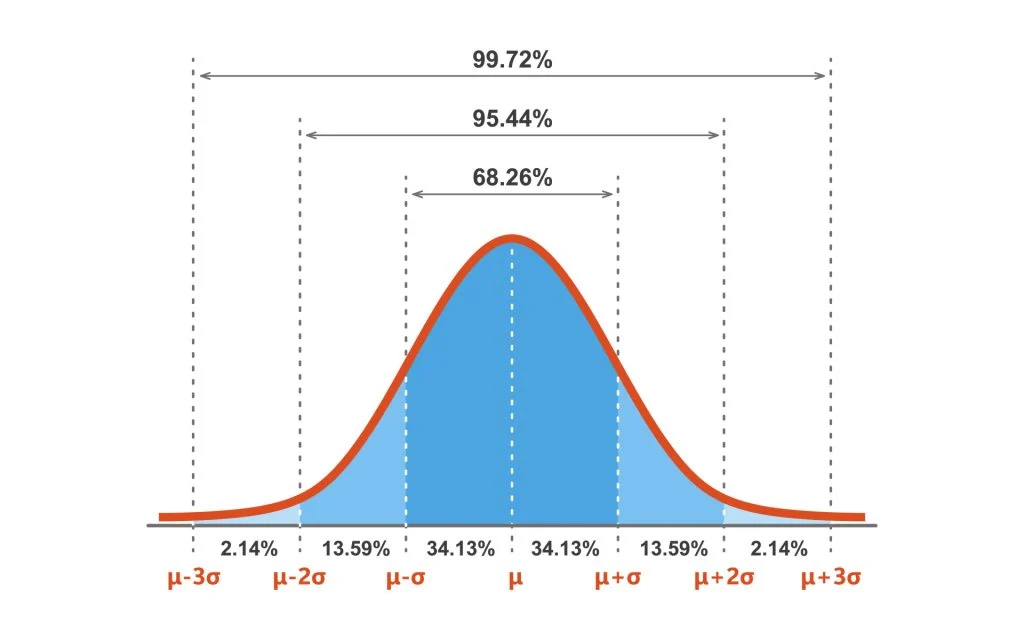
in a normal bell curve…
the mean, median, and mode are all equal and postioned at the center
sympatheic NS is _ and para(parachute)sympethic NS is _
fight or flight & rest and digest after SYMP NS
cognitive bias
systematic errors in judgment and decision-making that result from mental shortcuts (like heuristics, a shortcut from of algoirithims) and biases in how we perceive and process information. These biases can lead to inaccurate conclusions and irrational choices, but they can also enable us to make quick decisions in complex situations.
sunk cost fallacy
the tendency to continue investing in something (time, money, effort) even when it's clear that it's no longer a worthwhile endeavor, simply because of the resources already invested. It's a cognitive bias where people feel obligated to continue with a project or decision, even if it's detrimental, just because they've already put in considerable effort or resources (but they dont rly acknoweldge that it will only get even worse if they dont just stop cold turkey now)
functional fixedness
a cognitive bias where people struggle to recognize the alternative uses of familiar objects, limiting their problem-solving abilities. This bias, first defined by Karl Duncker, stems from individuals' tendency to focus on an object's typical function, preventing them from considering other potential uses
social loafing
the tendency for individuals to exert less effort when working in a group compared to when working alone. This phenomenon is a key concept in understanding group dynamics and productivity. In essence, people often put in less effort when they believe their individual contributions are not easily evaluated or that others will take up the slack
random _ is about choosing participants for a study, while random _ is about placing those chosen participants into different groups within an experiment. Random selection ensures the sample is representative of the larger population, improving external _. Random assignment, on the other hand, helps control for bias within the experiment, improving internal validity
selection & assignment & validity
_ thinking is the process of generating multiple, creative, and unconventional solutions to a problem, while _ thinking is the process of narrowing down possible solutions to find the single best or most logical answer. Divergent thinking is associated with _ and exploring a wide range of possibilities, while convergent thinking is focused on finding the most effective or correct solution
diveergent & convergent & creativity
An _ study involves _ and control over an independent variable (like REM sleep) to observe its effect on the dependent variable (like cognitive functioning test scores).
experimental & manipulation
_ variables are the outcome or what is measured in a study, and the _definition describes how that variable will be measured. assessments can be measurement tools, and then the operational definition would be the people’s scores
dependent & opertational
a random _ is a subset of a population selected in a way that every member of that population has an equal chance of being chosen. This ensures the sample is representative of the larger population, leading to more valid and reliable research findings.
sample
With medial (middle of the …)_ damage, patients typically _ memories formed long ago, such as faces and names of his aunts and uncles. a patient like that would have low accuracy rather than high accuracy on recent memory tests as they would have difficulty forming new memories and remembering events _ the incident that caused the amnesia.
temporal lobe & retain & shortly before
focusing on the meaning of words = _. It inolves deep processing which results in better long-term retention than shallow techniques like rhyming or visual appearences.
semantic encoding
_ perception in AP Psychology refers to the ability to see objects in three dimensions, allowing us to judge distance, even though the images on our retina are _dimensional. This perception relies on a variety of depth cues that the brain uses to _ visual information.
depth & 2 & interpret
an _ is a controlled research method where researchers manipulate an independent variable, measure its impact on a dependent variable, and aim to establish a _relationship. This involves purposefully introducing changes (the independent variable) and observing the resulting changes (the dependent variable) under carefully controlled conditions
experiment & causation
_ observation is a research method where researchers observe and record behavior in its natural setting _ interfering with it. This method is valuable for studying behaviors that are difficult or unethical to manipulate in a lab setting. It's a _ approach, focusing on descriptive data rather than numerical data.
natruallistic & without & qualitative
a _ study is a research method that investigates the relationship between two or more variables _ manipulating them. It aims to determine the strength and direction of the relationship (positive, negative, or none) between variables, often expressed as a correlation coefficient (r). Correlational studies are useful for making _and understanding relationships in real-world situations, but they cannot establish cause-and-effect relationships
correlational & without & predictions
_ studies are detailed analyses of individuals or small groups, offering a rich, in-depth understanding of a specific behavior or phenomenon. They differ from other research methods like experiments by focusing on _stories rather than broad statistical generalizations. Case studies are valuable for exploring complex situations, generating hypotheses, and gaining insights into unique perspectives. But they _ prove causation, only experiments can
case & indiividual & causation
_ memory refers to the idea that remembering something is easier when the environment or state you're in during the memory retrieval is the same as when you learned it. In essence, the context surrounding a memory helps us access and retrieve it.
context-dependent (about physical setting?)
_ rehearsal is a memory technique used that involves connecting new information with what you already know to enhance understanding and long-term memory. This method goes beyond simple repetition by creating _ associations, promoting deeper processing and improved recall. for example, Instead of just _ the definition of "elaborative rehearsal," you could relate it to your own study habits. Also, using _ is an example
elaborative & meaningful & repeating & analogies
_ rehearsal is a simple form of memory maintenance where information is repeatedly recalled in the short-term memory to prevent forgetting. It's like repeating a phone number to yourself to remember it while you dial it. (working mem?) While useful for temporary recall, it _ lead to long-term memory formation
maintence & deosnt
operational definition
provides a precise and measurable definition of what it needs to measure (like maybe a serious mental illness) It emphasizes a specific number of things impacted.
The alarm stage of the GAS model occurs when the stress level starts to increase, it’s…
The "alarm stage" in the context of General Adaptation Syndrome (GAS) is the initial, immediate reaction to a stressor, often referred to as the "fight-or-flight response". This stage involves the body preparing to deal with the stressor by triggering physiological changes like increased heart rate, adrenaline release, and heightened alertness.
the GAS (general adaption sydrome) model that says the longer stress occurs then the __ ability to combat sickness.
less
if a study involves comparing different treatment groups at a specific point in time, it suggests a _ design.
cross sectional
_ is a process of self-reflection on how one's own background and the backgrounds of others impact communication and relationships. It's a mindset focused on recognizing one's limitations in understanding other cultures and being open to continuous learning and self-correction. It's not about achieving a state of perfect understanding, but rather a willingness to acknowledge one's biases and engage in a respectful, ongoing process of learning from others
cultural humility
_ memory refers to the phenomenon where memory retrieval is improved when the physical and psychological context during encoding (learning) matches the context during retrieval (recall). Essentially, you're more likely to remember something if you're in the same environment or state of mind as when you originally learned it
context dependent
depth perception is primarily about _ _ rather than clarity. It's the ability to perceive the world in three dimensions, including the relative distance of objects, and not just how clearly they appear. While clarity can be a depth cue, it's one factor among many that contribute to the overall perception/estimation of depth
estimating distance
_ are part of elaborative rehearsal, not maintenance rehearsal. Elaborative rehearsal involves making meaningful connections between new information and existing knowledge, which includes strategies like creating analogies. Maintenance rehearsal, on the other hand, is simply repeating information without deeper processing
analogies
using students in a study instead of a random sample can introduce _ and limit the generalizability of findings. it's important to acknowledge the limitations and consider alternative sampling methods than just using your own students when possible.
Student samples can be biased due to (some shared?) factors like age, socioeconomic background, and educational experience, which may not accurately reflect the broader population you're trying to understand.
Findings from a student sample might not be applicable to other populations (e.g., older adults who have different educational backgrounds).
Researchers should be transparent about the sample used and its limitations. Students should be informed about the study's purpose and their right to withdraw if they feel uncomfortable.
bias

The Multi-Store Model of Memory, also known as the Atkinson-Shiffrin Model, is a structural model of memory in psychology that proposes three distinct memory stores: sensory memory, short-term memory (STM), and long-term memory (LTM). It suggests that information flows _ through these stores as it is processed and potentially stored
sequentially
_ _results indicate that the observed findings are unlikely to be due to chance or random variability. This means the results are strong enough to suggest a real effect or relationship between the variables being studied, rather than just being a fluke of the sample. A common way to assess statistical significance is by using a p-value (chance of result being a fluke?), which quantifies the probability of observing the results if there were no actual effect. If the p-value is below a certain threshold, typically 0.05 (or 5%), the results are considered statistically significant.
statistically significant

a _ scale is a rating scale used to measure attitudes, opinions, or behaviors. It presents a series of statements, and respondents indicate their level of agreement or disagreement with each statement using a defined set of options, such as "strongly disagree" to "strongly agree,"
likert
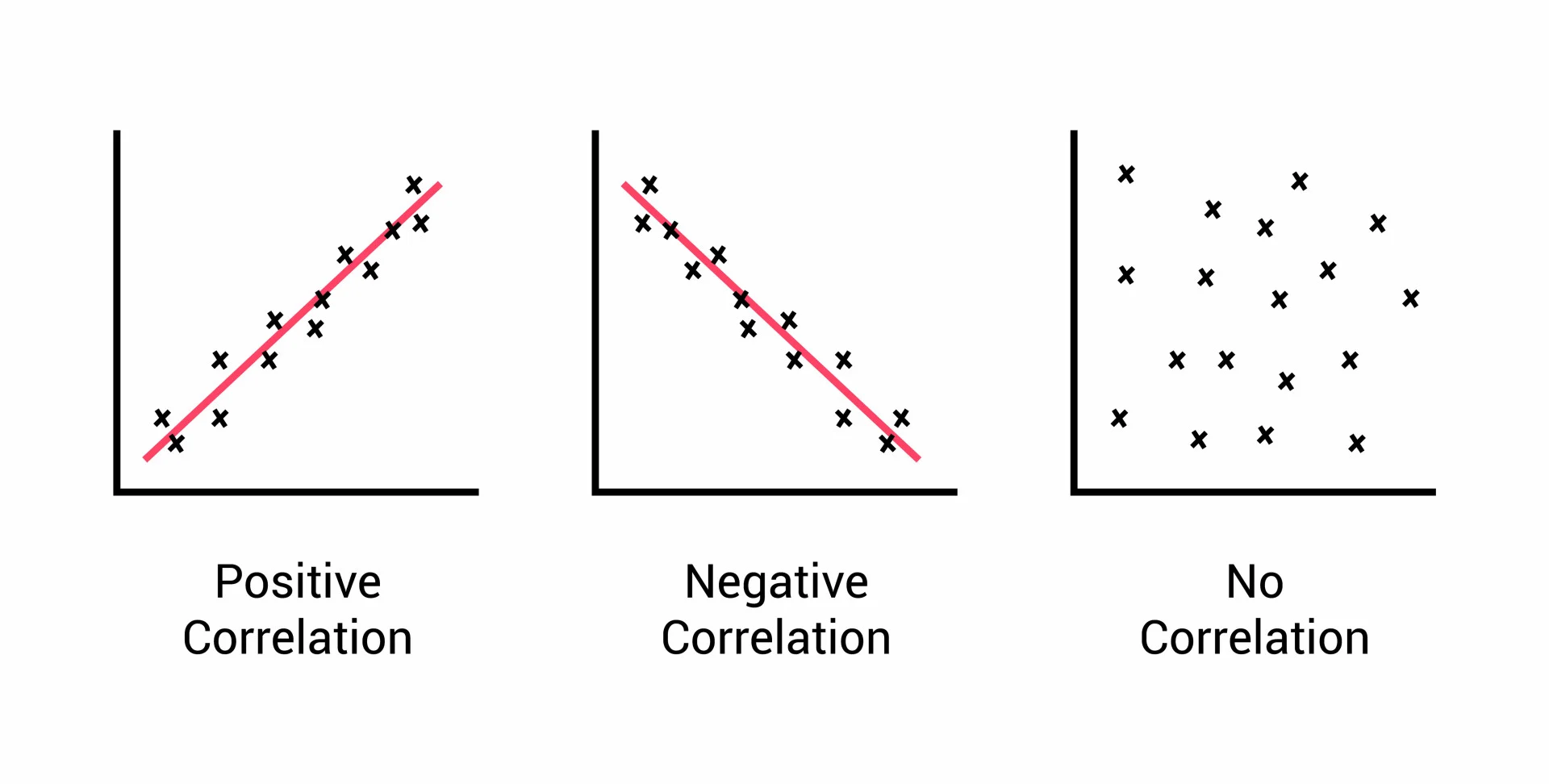
a _ coefficient, typically represented as "r," is a statistical measure that quantifies the strength and direction of a linear relationship between two variables. It ranges from -1 to +1, where +1 indicates a perfect positive correlation, -1 indicates a perfect negative correlation, and 0 indicates no correlation.
correlation
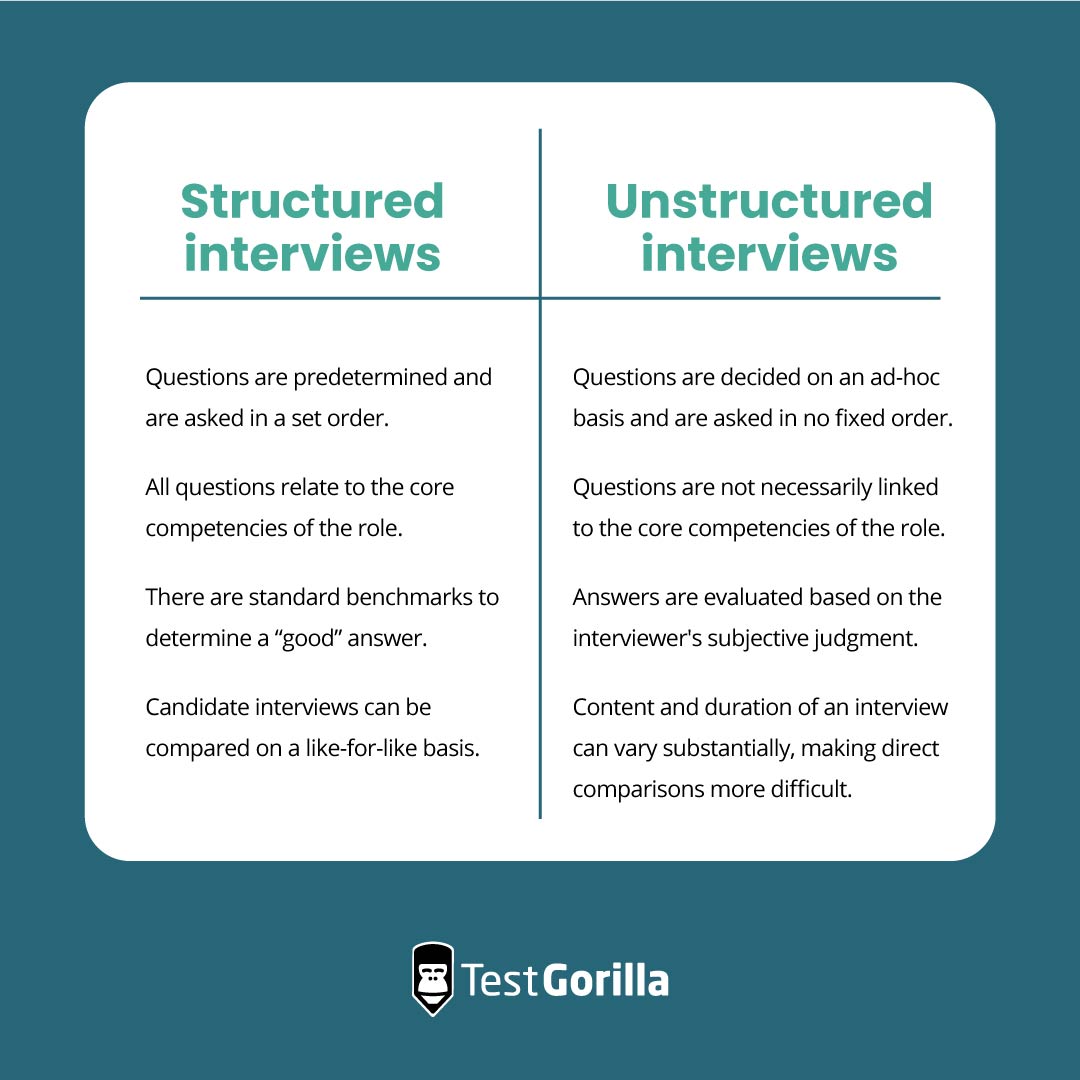
a _ _ is a research method where all participants are asked the same questions in the same order, ensuring consistency and comparability. It's a type of interview where questions are predetermined, often closed-ended (e.g., yes/no, multiple choice), and administered in a specific sequence. This method is often used to gather quantitative data and aligns with quantitative research approaches, making it easier to analyze and generalize findings.
structured interview
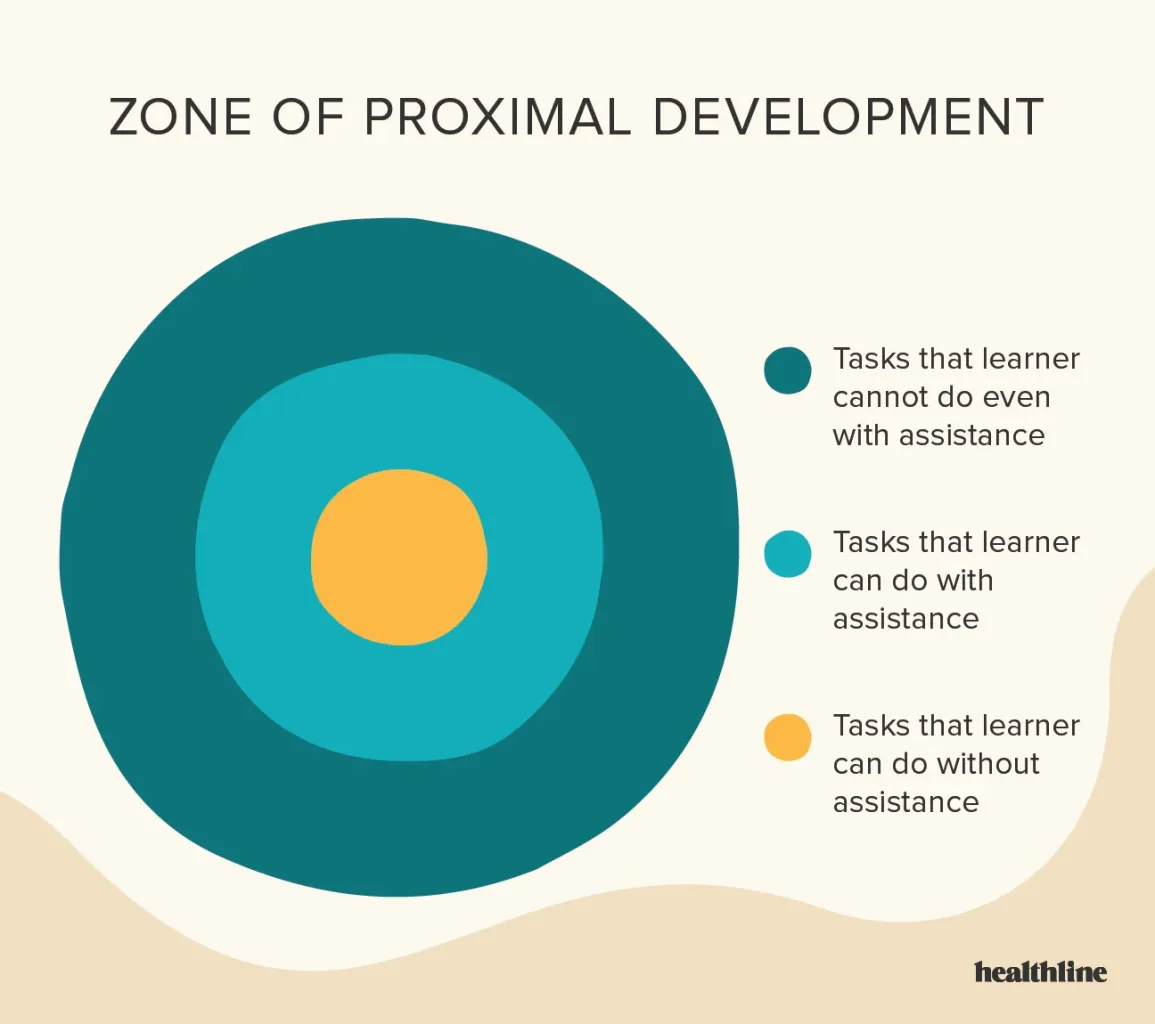
Vygotsky's zone of proximal development (ZPD) refers to the range of tasks a learner can perform independently and those they can achieve _ assistance. It's the space between a learner's current ability and what they can achieve with _ from a more skilled individual. This concept is crucial for understanding how learning and development occur through social interaction and guidance.
with & guidance
a _ is a statistical technique used to combine the results of multiple studies on a specific topic to reach a broader conclusion. It's essentially a "study of studies," providing a comprehensive overview by analyzing the effect sizes and results of various independent research studies.
meta anaylsis
A _ study is a type of research design that analyzes data from a population at a single point in time. It's like taking a "snapshot" of a group of people or subjects to observe differences between them. Cross-sectional studies are often used in developmental psychology to compare different age groups and understand how variables change over time.
cross sectional
a cross-sectional study compares different groups of people at _ point in time, while a meta-analysis combines the results of _ existing studies to identify overall trends and effects. Cross-sectional studies are good for examining differences between groups, while meta-analyses help to synthesize a lot of research into a broader understanding.
a single & multiple
a cross-sectional study examines different groups of people at _ in time, while a longitudinal study follows the same group of people over a _ of time. Cross-sectional studies are quicker and less expensive, but they can't establish cause-and-effect relationships. Longitudinal studies allow for the observation of changes over time, but they are more costly, time-consuming, and prone to attrition (participant drop-out). both _ prove causation, only experiments can
one point & long & cannot
_ refers to an individual's internal, personal sense of being a man, woman, both, neither, or somewhere along the gender spectrum. It's a person's deeply felt, inherent sense of their own gender, which may or may not align with their assigned sex at birth
gender identity
sensory adaptation and habituation are both mechanisms that lead to a decreased response to stimuli over time, but they differ in their underlying processes and conscious control. _ _ is a physiological process where sensory receptors become less responsive to a constant stimulus, while _ is a behavioral process where attention and response to a stimulus decrease due to repeated exposure (like maybe to drugs?).
sensory adaptation & habituation
This is a psychological phenomenon where repeated exposure to a stimulus leads to a decrease in attention or response to that stimulus. It's a learned response, meaning the individual _ chooses to pay less attention.
habituation & actively
_ are harmful substances that can cause developmental defects in a fetus if ingested or contracted by the mother during pregnancy. Examples of teratogens include alcohol, certain medications, and environmental toxins. Understanding teratogens is important for comprehending how prenatal environments can impact a child's development. Some teratogens linked to increased _ risk include maternal influenza infection, severe maternal stress, and certain drugs.
teratogens & schizophrenia
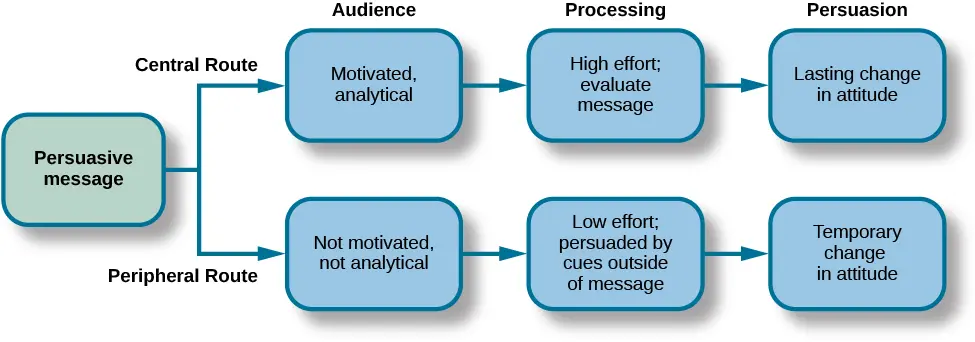
The Elaboration Likelihood Model (ELM) in AP Psychology explains how people process _ messages and change their attitudes. It suggests two routes: the central route (Involving deep thinking and careful evaluation of the message) and the peripheral route (relying on superficial cues and leading to more temporary attitude changes). Central Route: A consumer carefully reads a product review before making a purchase, evaluating the arguments and evidence presented.
Peripheral Route: A person is _ by a celebrity endorsement of a product, without carefully considering the product's actual features or benefits.
persuasive & swaded
identity _ refers to prematurely committing to an identity, values, or goals _ exploring alternative options or undergoing personal exploration, often based on the choices or values of others. This commitment happens without questioning or considering other possibilities, leading to a lack of authentic self-awareness. It's a stage in James Marcia's theory of identity development where individuals accept a _ identity, often influenced by authority figures like parents or coaches.
foreclosure & without & predetermined
Children are generally most _ during the preoperational stage, which typically occurs between the ages of 2 and 7. During this stage, young children _ to understand perspectives other than their own and believe everyone sees, thinks, and feels the same way they do.
egocentric & struggle
Theory of Mind (ToM) is the ability to understand that others have their own minds, thoughts, feelings, and beliefs, and that these mental states can differ from one's own. Children begin to develop ToM around _ years of age, with gradual improvements throughout childhood.
3 to 5
_ means occurring or appearing at irregular intervals, not constantly or regularly. It's a word often used to describe phenomena in psychology that don't happen all the time, but reappear sporadically. For example, a psychological condition might be described as "intermittently" affecting someone, meaning that the symptoms come and go rather than being constant
intermitenntly
_ _ (aka the Sapir-Whorf hypothesis) is the theory that the structure of a language influences the way its speakers perceive and conceptualize the world. It suggests that different _ can lead to different patterns of thought and behavior. While the strongest form, linguistic determinism, proposes that language determines thought, the current understanding favors linguistic relativity, which suggests that language influences thought but doesn't strictly limit it. For example,
Color: Some languages have different color categories than English, which might influence how their speakers perceive and categorize colors.
Spatial relations: Egocentric languages (like English) describe directions relative to the speaker, while geocentric languages (like Hopi) use cardinal directions (NESW)
linguistic relativity & languages
sociocultural background can significantly influence the perception and impact of adverse childhood experiences (ACEs). _ norms, values, and beliefs can shape how ACEs are experienced, interpreted, and coped with, ultimately affecting their long-term consequences. for example, a child from a marginalized racial or ethnic group (Chinese) might experience systemic racism as a stressor, impacting their perception of safety and stability
cultural
In "_," the prefix "dis-" means "not" or "away from". This is reflected in other words like "disconnect" or "disappear," where "dis-" indicates a negative or separated state; the prefix for "distress" is dis-. It indicates a state of difficulty, pain, or suffering.
distress which is opp of eustress (like euphoria)
_ refer to external events or stimuli that _ a stress response in an individual. These stressors can be categorized into different types, including catastrophes, significant life changes, and daily hassles. The perception and response to these stressors is key to understanding the stress process
stressors & trigger
a longitudinal study is a research method that involves _ the same participants repeatedly over an extended period to track changes and trends over time. This contrasts with cross-sectional studies, which compare different groups of participants at a single point in time. Longitudinal studies are valuable for understanding developmental changes, long-term effects, a can offer valuable insights only into causal relationships (NOT DIRECT PROVING) by observing how changes in one variable influence changes in another over time
observing
a _group is the group that does not receive the independent variable (the thing being tested). It's used as a _ for comparison with the experimental group, which does receive the independent variable. Essentially, the control group helps researchers _the effect of the independent variable by showing what happens without it.
control & baseline & isolate
In the General Adaptation Syndrome (GAS), the _ stage is the initial body's response to a stressor, activating the sympathetic nervous system and triggering the "fight-or-flight" response. This involves a surge of hormones like adrenaline and cortisol, leading to physiological changes like increased heart rate, rapid breathing, and heightened senses.
alarm
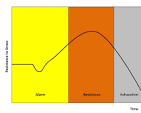
The General Adaptation Syndrome (GAS) is a psychological concept describing the body's response to _, proposed by Hans Selye. It involves three stages: alarm, resistance, and exhaustion. The alarm stage is the body's initial reaction to stress, activating the sympathetic nervous system. the first stage (alarm) is the initial body's response to a stressor, activating the sympathetic nervous system and triggering the "fight-or-flight" response. This involves a surge of hormones like adrenaline and cortisol, leading to physiological changes like increased heart rate, rapid breathing, and heightened senses.
The _ (2nd) stage involves the body attempting to cope with the stressor, releasing stress hormones. Finally, the _ stage occurs when the body's resources are depleted, making it vulnerable.
stress & resistance & exhaustion
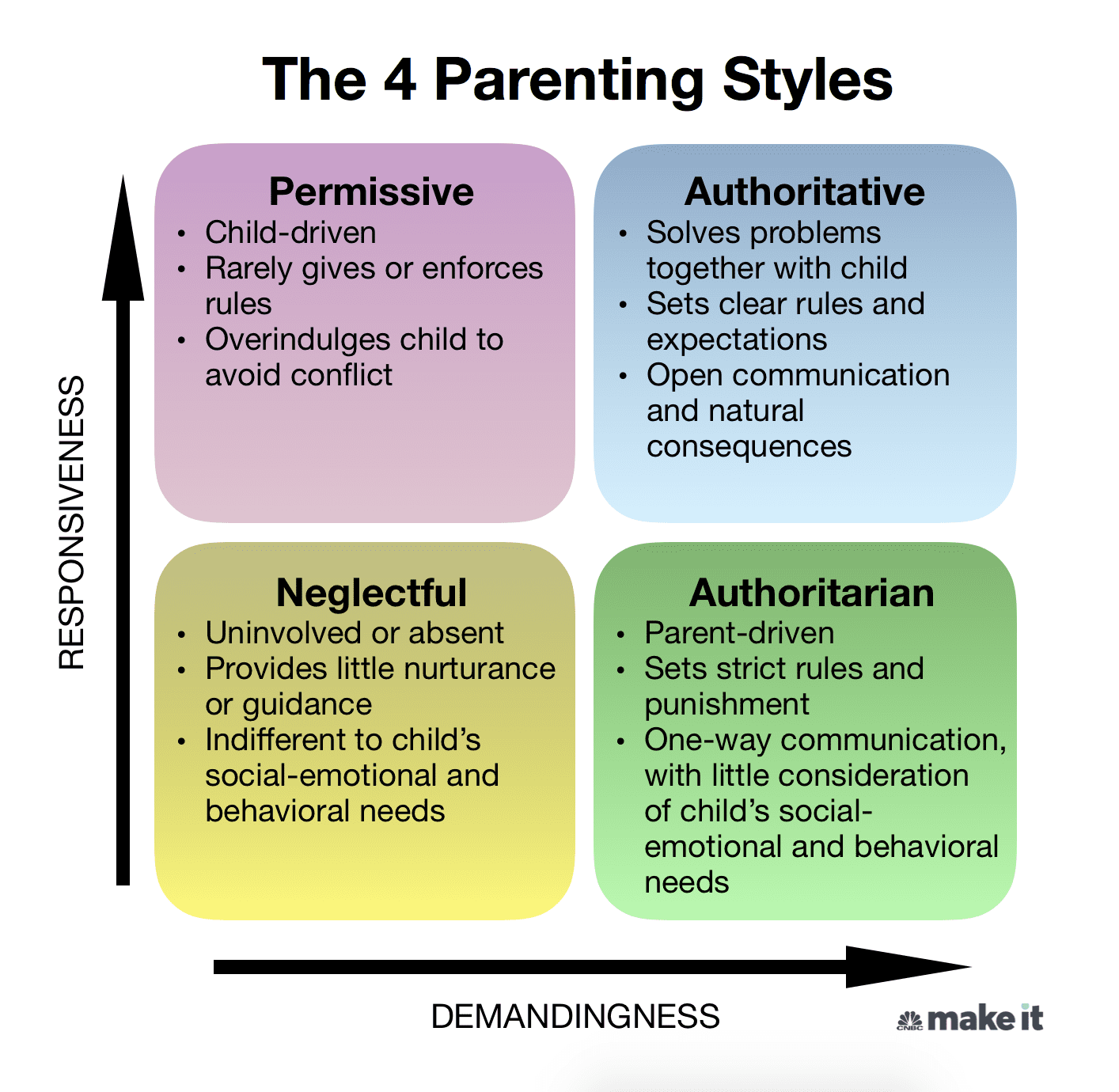
the difference between authoritarian and authoritative parenting styles lies in their approach to discipline and responsiveness. Authoritarian parents are _ and expect strict obedience, while authoritative parents set clear rules but are also _ to their children's needs and opinions
demanding & responsive
diagnostic _ refers to using established classifications, like those in the DSM-5, to categorize mental health conditions. These labels help _the nature of a disorder, guide treatment, and facilitate research, but they can also lead to stigma and potentially harmful effects. Diagnostic labeling can lead to negative effects because it can trigger stigma, reinforce stereotypes, and lead to self-fulfilling prophecies. Furthermore, the process of seeking and receiving a diagnosis can be stressful and, in some cases, lead to feelings of shame or isolation.
labeling & communicate
a _ is a person who pretends to be a participant in a research study, but is actually part of the research team. They are used to create the illusion that others are involved in the study when they are not, helping to maintain the _ needed for some experiments
confederate (think abt an american thats hiding something bad, but not rly lol) & deception
_ is the ethical principle that emphasizes the responsibility of researchers and professionals to avoid causing harm to others. This principle, a core concept in the APA Code of Ethics, mandates that actions should not only be beneficial (beneficence) but also avoid causing intentional harm. It underscores the importance of protecting the welfare of individuals and _ any potential negative consequences of research or clinical interventions
nonmaleficence & minimizing
_ refers to the degree to which a program or intervention is implemented as intended. It essentially measures how closely an implementation matches the original design of the program, including _ to specific procedures and protocols. Fidelity is crucial for understanding the effectiveness of interventions and ensuring that research findings translate into real-world practice.
fidelity & adherence